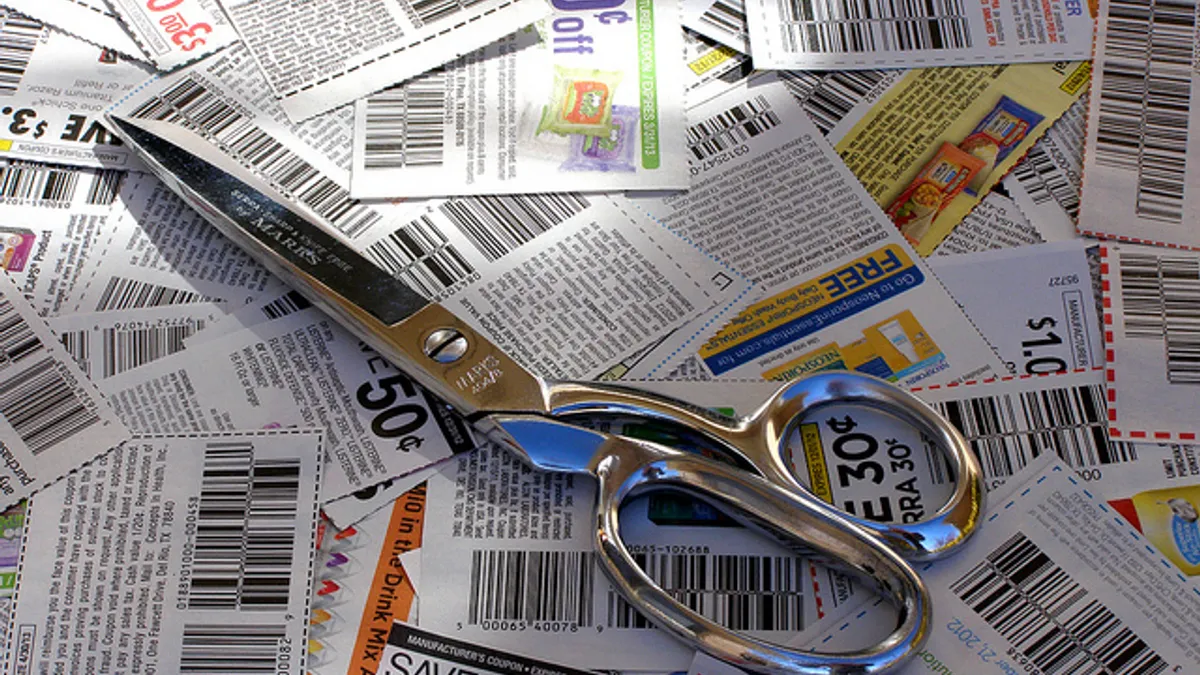Dive Brief:
- Free standing insert (FSI) print promotion activity, measured by coupons dropped, fell 12.4% during the first half of 2019, according to a new analysis by Kantar Consulting sent to Grocery Dive. The report shows the declines are primarily in personal care products, particularly in hair care and shaving, and in dry groceries like candy, snacks, coffee and other center store items.
- The analysis found that manufacturers are allocating more money for digital coupons in food categories. Digital coupons and promotions grew 8.5% in the first half of this year, driven by dry grocery, which had an increase of about 390 million prints and clips.
- Overall, digital prints and clips in the food category saw an uptick of 26% in the first half of 2019, getting the biggest boost from frozen and dry grocery products.
Dive Insight:
Based on the findings from Kantar, customers still love coupons in any form, but digital is gaining ground. Digital promotions offer ease for consumers, are better for the environment and less costly for manufacturers and retailers.
As Kantar’s research shows, mailed coupons often go unused and as a result, manufacturers are scaling back. These inserts have historically been found in the Sunday newspapers, but U.S. daily print circulation for Sunday newspapers is down 9% and has been declining for nearly 30 consecutive years. Target consumers may not even receive the insert.
Meanwhile, digital coupons are showing tremendous growth. Because of their convenience and ability to be used when making online purchases, couponing doesn’t have the same connotation that it used to. According to Statista, about 54% of internet users ranging from ages 18 to 29 stated that discounts and coupons were very important to their overall online purchasing decisions.
Digital couponing also allows retailers to collect more data and make more personalized offers. The rise in digital coupon apps from large retailers like Kroger to smaller chains like Schnucks, and third-party apps like iBotta and Walmart Savings Catcher, reflect consumers' willingness to switch to digital coupons.
Other reports have found results similar to Kantar's. Inmar’s most recent report found that in 2018, load-to-card accounted for 1.6% of all coupons distributed, a 29% increase from 2017. Eighty percent of the shoppers Inmar surveyed said that coupons changed their behavior in some way, such as buying sooner, trying a new brand or purchasing more than they would have without a coupon.
Despite the growth in digital, print coupons are still important to consumers. Inmar found that about 43% of shoppers still look for paper coupons prior to grocery shopping and 40% look at the store circulator for promotions prior to shopping. For retailers and manufacturers, until e-commerce is more widely adopted, sticking to both promotional methods is their best bet.













